- Joined
- Dec 13, 2015
- Messages
- 141
- Reaction score
- 481
An interesting site this, here's some Wiki and Bawdseyradar.org
WWII
On 24th September 1937 RAF Bawdsey became the first fully operational Radar station in the world.* This was only just over eighteen months after the first experiment, conducted by Robert Watson Watt and Arnold Wilkins, established that by using transmitted radio waves it was possible to detect an approaching aircraft.* Bawdsey continued in the development of Radar until the outbreak of the Second World War, on 3rd September 1939, when the scientific team was moved from this vulnerable east coast site to Dundee.* RAF Bawdsey remained an important Radar station and later a Bloodhound Surface to Air Missile (SAM) site until 31st March 1991, when it was officially closed.
Following the First World War, protecting the UK from attack was discussed at great length. But it was not until 1934, when an air-defence exercise to test defence was carried out that things really started to get going. Although the targets and routes of the exercise were known, more than half the bombers managed to get through to their targets. This led to the Air Ministry looking at the idea of radio “death rays” which would eliminate or disable pilots and their aircraft. The Scots physicist Robert Watson-Watt, supervisor of a national radio research laboratory and descendant of James Watt, inventor of the first practical steam engine, was contacted and asked for his views. Watson-Watt dismissed the idea of death rays but said that radio beams could be bounced off enemy aircraft to detect them. He asked his assistant, Arnold “Skip” Wilkins, to undertake some calculations He then drew up a memo and covering letter outlining his ideas and although it was met with enthusiasm, proof that the system could work was demanded.
On 26 February 1935, Watson-Watt and Arnold Wilkins successfully demonstrated their system using a BBC transmitter which managed to pick up a bomber being used as a test target. In May 1935 Watson-Watt, Wilkins and a small team of scientists moved to Orfordness to conduct a series of historic experiments over the sea that would lead to the world’s first working ‘RADAR’ system. It soon became apparent that Orfordness was inadequate for further research and Bawdsey Manor Estate was purchased for £24,000. In February 1936 the research scientists occupied Bawdsey Manor House and the stables and outbuildings were converted into workshops. 240ft wooden receiver towers and 360ft steel transmitter towers were built and Bawdsey became the first Chain Home Radar Station. By the outbreak of World War 2 a chain of radar stations was in place around the coast of Britain. These radar stations were to prove invaluable during the Second World War and particularly during the Battle of Britain. With 2,600 Luftwaffe planes to the RAF’s 640, it was the use of radar that saved the day.
As a high-priority target for the Luftwaffe, Bawdsey didn’t get off lightly and was bombed on at least 12 occasions. However, huge earth revetments supported by reinforced concrete walls and a roof specially designed to dissipate the force of an overhead blast prevented the destruction of the station. During WW2, RAF Bawdsey was identified as a potential target and in September 1939 was protected by three 40mm Bofors guns and two .303 Lewis anti-aircraft guns. With an increased fear of a German invasion, these defences were supplement in 1940 by slit trenches, sandbag gun emplacements, a concrete gun post and at least ten type 24 pillboxes; nine of these still survive. There were several attacks on the station during 1940 which did little damage with no casualties and on 18th October 1940 anti-aircraft gunners shot down a German bomber. Sporadic attacks continued over the following three years with some loss of life; the last bombing raid near Bawdsey was on 30th June 1944. A V1 rocket crashed on the beach on 21st September 1944 and a V2 detonated over the sea on 9th October.
ROTOR
ROTOR was a huge and elaborate air defence radar system built by the British Government in the early 1950s to counter possible attack by Soviet bombers. The system was built up primarily of war-era radar systems, and was used only briefly before being replaced by the more modern Linesman/Mediator system. A similar expedient system in the United States was the Lashup Radar Network.UK radar operations were wound down late in the war, and by the time the war ended were already largely unused. It was assumed that another war was at least ten years away, and the need for any improvements in the cobbled-together system seemed remote.
Thinking changed dramatically in 1949 with the Soviet test of their first atom bomb. It was known that the Soviets had made exact copies of the B-29 Superfortress as the Tu-4 Bull, and these aircraft had the performance needed to reach the UK with a nuclear payload. Studying the problem, the 1949 Cherry Report suggested that the 170 existing Royal Air Force radar stations be reduced to 66 sites and the electronics extensively upgraded. Most of the new network would be made up of 28 re-built Chain Home systems, while the rest were taken from the existing selection of Chain Home Low, Chain Home Extra Low and the various Ground-controlled interception (GCI) radars that had formerly served special purposes. This was, in part, a stop-gap measure anticipating the availability of the dramatically improved Type 80 Green Garlic radar which would replace the various early warning radars with a single system of much greater performance. Interception guidance would still be handled by existing systems in either case. All of the radars were to be improved in terms of siting with the addition of hardened control bunkers to protect the operators from a conventional attack. On the east coast, the coast toward which a Soviet attack would be most likely, the bunkers were underground in the 'R' series (R1, R2, R3 and R4 etc.), while those on the western side of the UK were generally semi-sunken hardened structures ('R6') or above ground 'Secco' type huts (Hartland Point etc.). The R-series bunkers themselves were otherwise similar, featuring 10-foot-thick (3.0*m) concrete walls with all equipment, operations generators and air conditioning located inside.
Additionally, ROTOR re-arranged the existing RAF Fighter Command structure into six "Sector Operational Commands" (SOC) with their own command bunkers (three level 'R4' protected accommodation). Only four of these were built. Additional "Anti-Aircraft Operations Rooms" were built to coordinate the British Army's AA defences in the same overall system. The entire network of bunkers, radars, fighter control and command centres used up 350,000 tons of concrete, 20,000 tons of steel and thousands of miles of telephone and telex connections. The work was mainly carried out by the Marconi Wireless and Telegraph Company in several phases, called ROTOR 1, ROTOR 2 and ROTOR 3. As the anticipated Type 80 "Green Garlic" radar started testing shortly after ROTOR came online, it became clear that it could fill both early warning and interception guidance from a single site. This dramatically decreased the complexity of the ROTOR system, which otherwise required sightings from the early warning radars to be telephoned to the fighter control GCI stations for local plotting. By concentrating all of this complexity at a single site the total number of operators was greatly reduced.
As a result of the introduction of the Type 80 (Green Garlic), many of the existing ROTOR sites were rationalized into Master Radar Stations (MRS), while the rest were made redundant, some only two years after opening, and all of the AAOR sites were closed. A few of these were re-used for government department ('RSG's) and local authority wartime headquarters. In the mid-1960s the MRSs themselves were replaced with a new system called Linesman/Mediator.
Until the end of the Cold War many of the sites were retained by the government but now have been sold off to private buyers or converted into and some transferred to the National Air Traffic Control Centre.
EXPLORE
This is a site we dubbed ‘The Spider Bunker’ long ago after reading various reports on here and through other forums however until this visit, none of us has seen it for ourselves. We found the site fairly easily and took full advantage of the ample parking, making our way through the perimeter fence and into the bungalow we had all seen in so many previous reports and which we knew was actually a disguised entrance to find……..nothing but a chuffing great slab of concrete (and a pretty cool looking turnstyle) and a sudden realisation that I didn’t have the connection plate for my tripod with me (Fffffffffffuuuuuuu!!). Worried that the ‘totally sealed up’ rumours were true, we carried on looking, BigDirk reminding us that “She was here 3 weeks ago and said in her report it was the same usual entrance”. We split up to check the various buildings with me and Pringle going one way and Piffblazer, BigDirk and another non-member went the other and before we knew it, Pringle had found the access point. After a squeeze and a shuffle we found ourselves at the top of a gloriously gloomy staircase.
I had looked forward to this explore for so long with slight trepidation (prangin’?) after googling red backed spiders a few too many times however this was all forgotten once we descended into the darkness and had a look around; what a place! The bunker is in pretty good nick with very little flooding apparent. Graffiti was minimal to non-existent and there was a wealth of artefacts left over from its days of active service. I couldn’t believe just how vast it was, with some rooms boasting double height ceilings that must have risen 25ft above us. An awesome place steeped in history and a real privilege to visit, one I’ll definitely be returning to with all the right gear. As for the spiders…..I didn’t see one.
The main things to watch out for are the holes and the smell, a good mask and torch are essential down there!
On with the pictures! Sorry if the perspective on some is a little….strange. I ended up using anything I could find as a tripod which mainly involved me lugging around an old shelving unit.
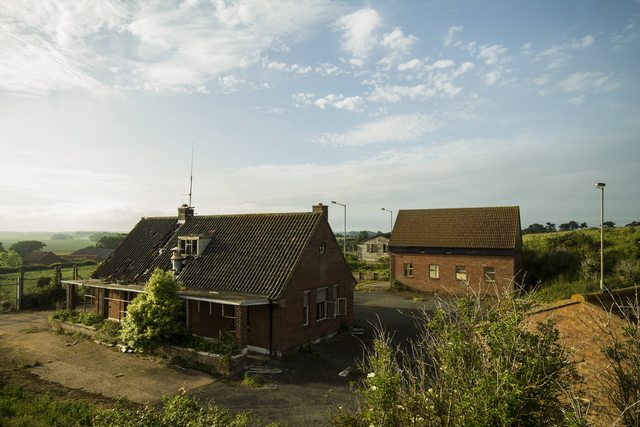
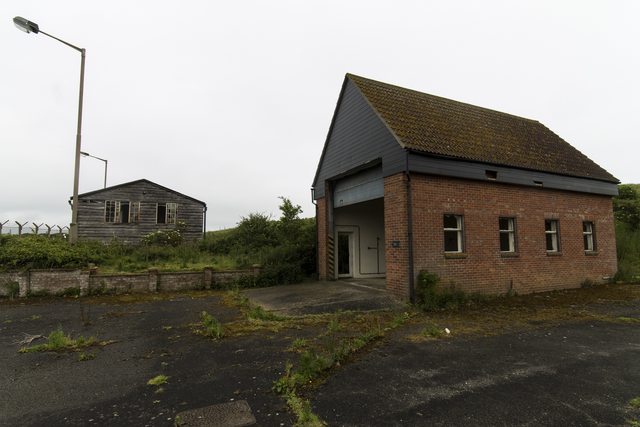
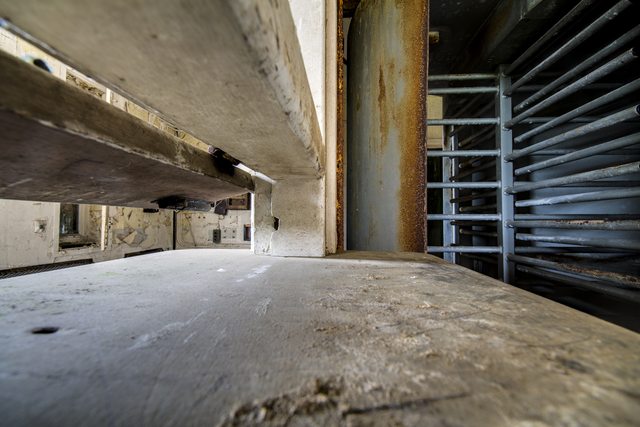
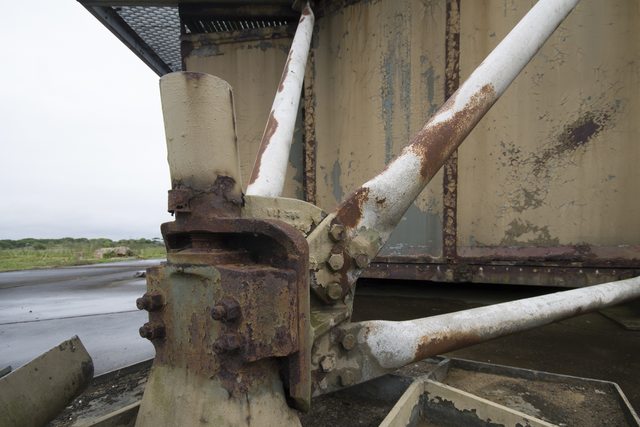
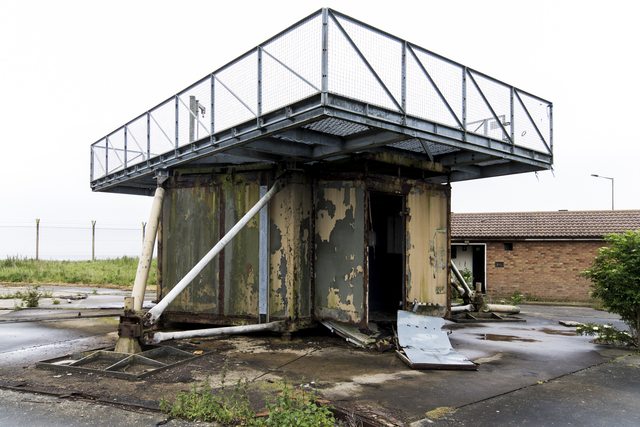
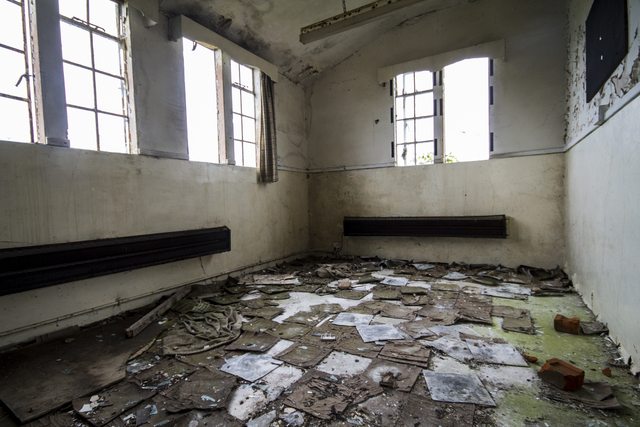
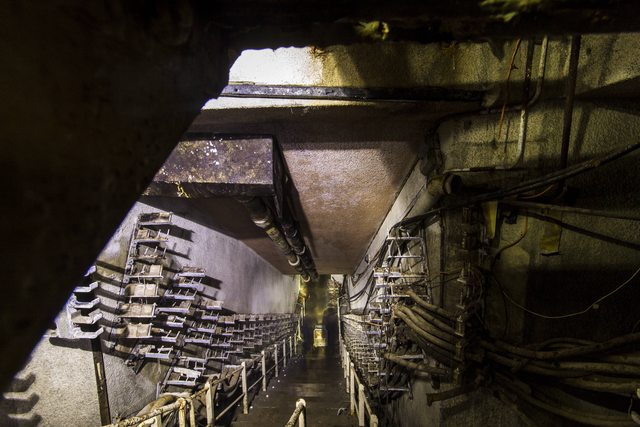
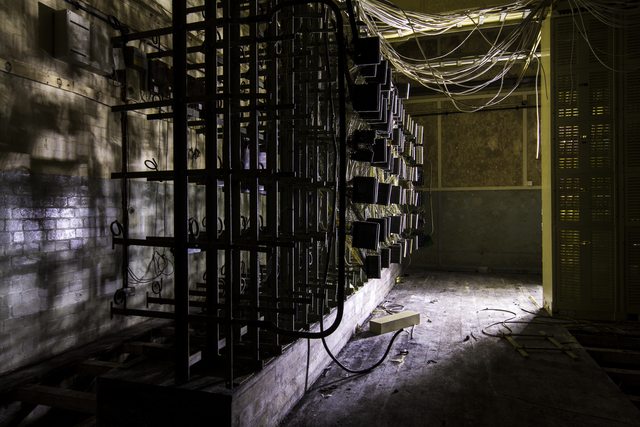
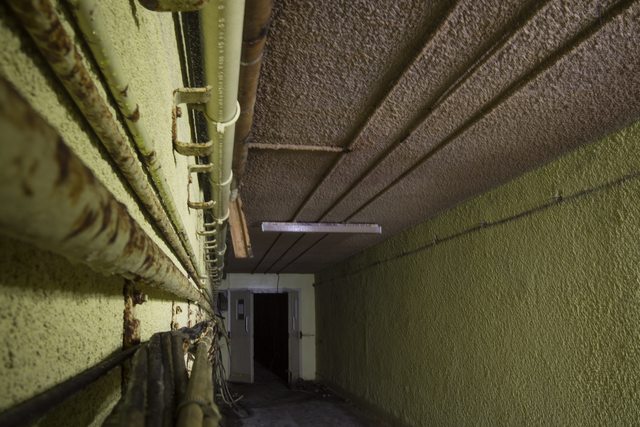
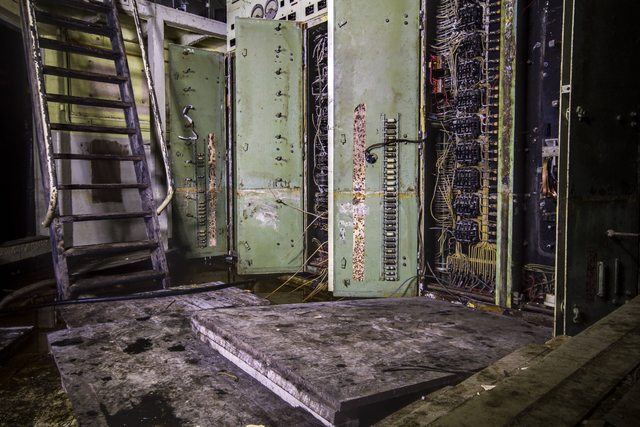
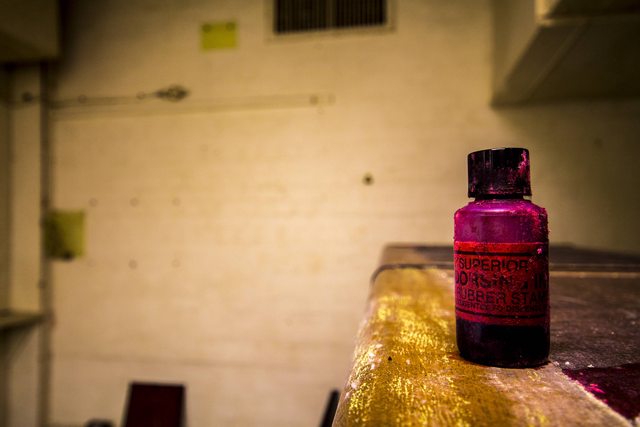
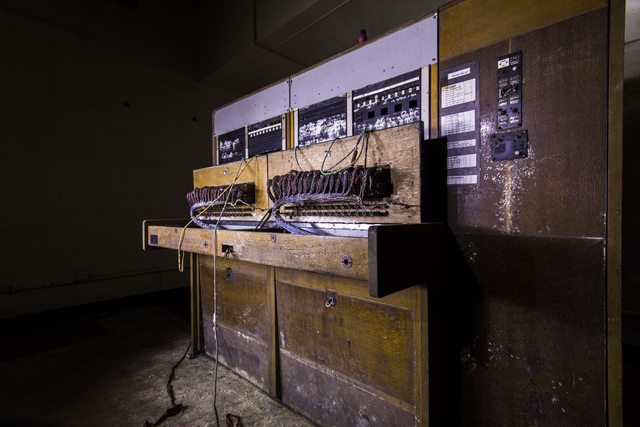
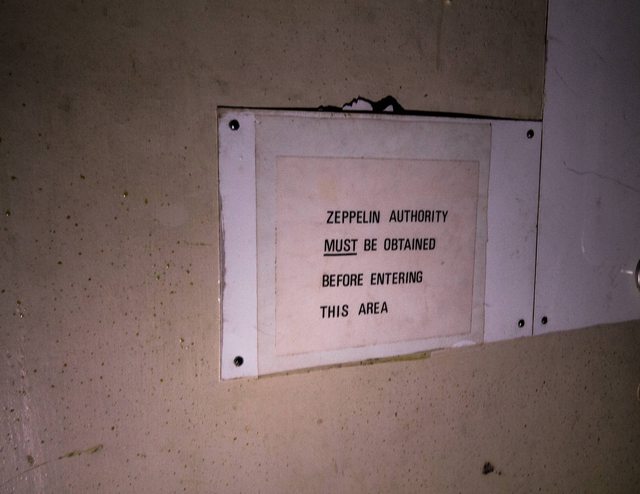
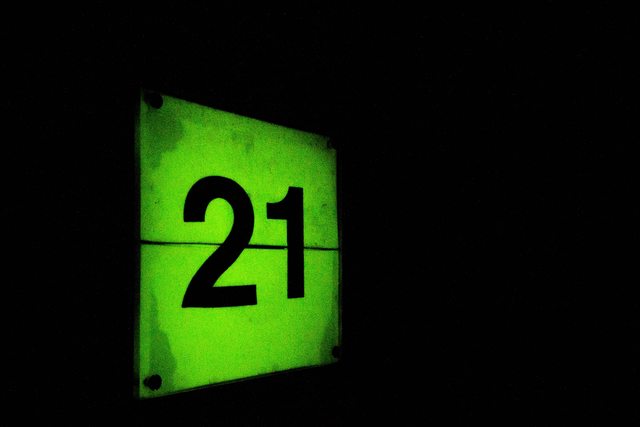
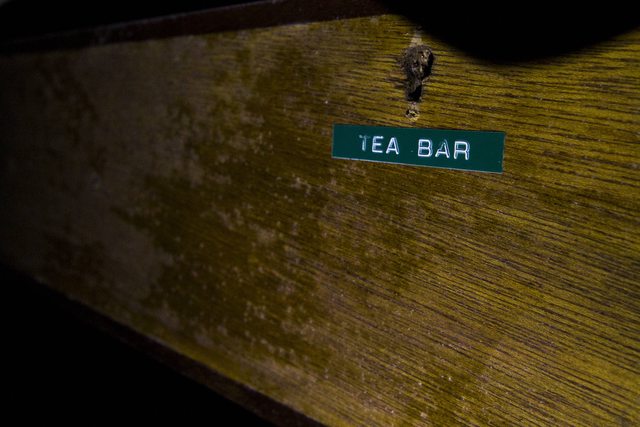
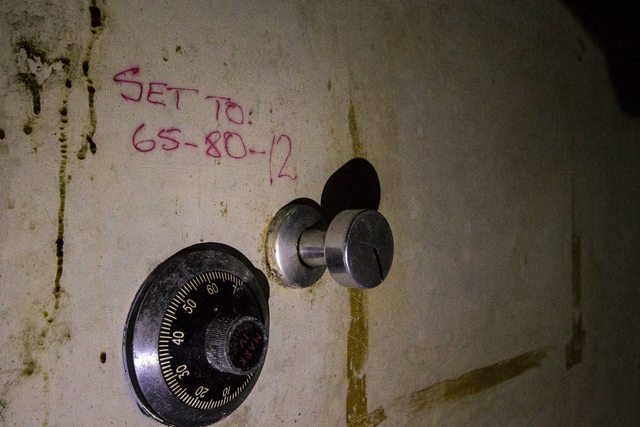
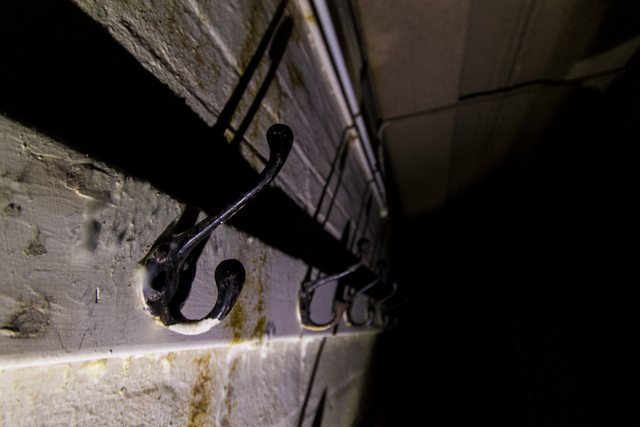
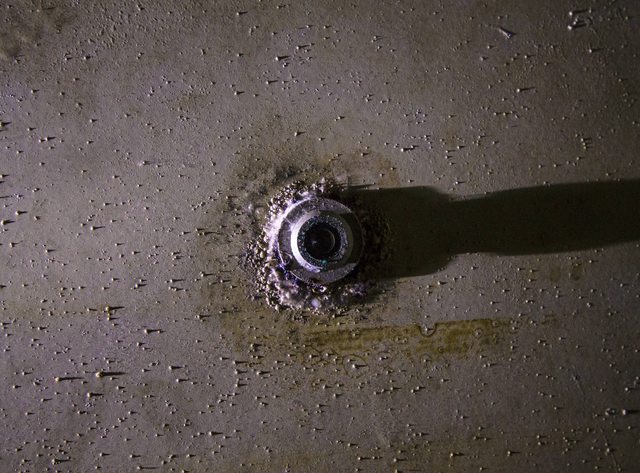
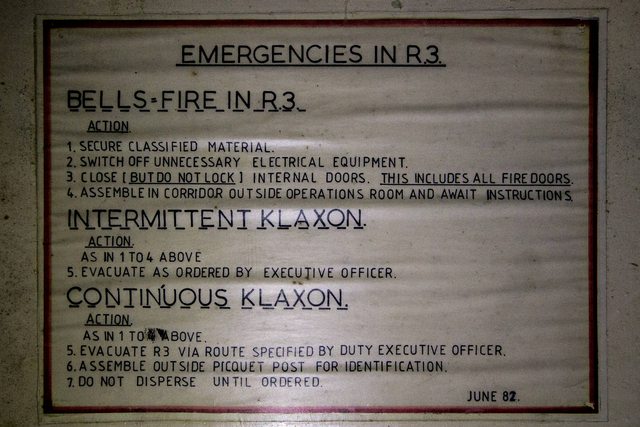
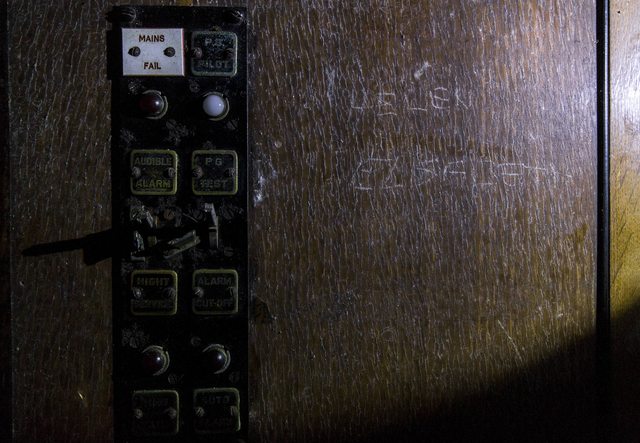
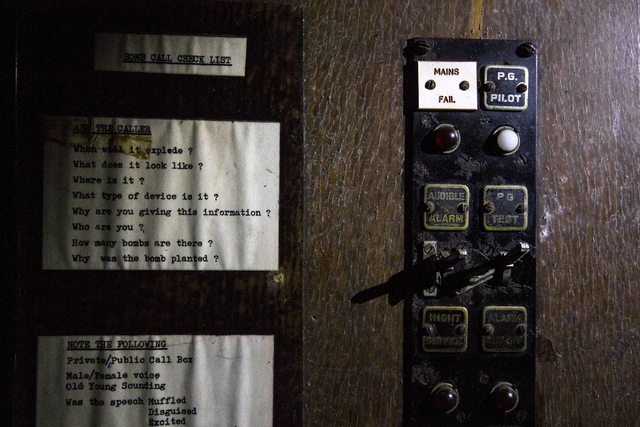
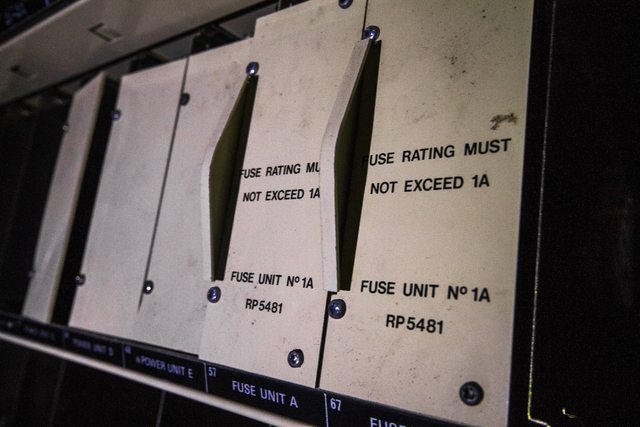
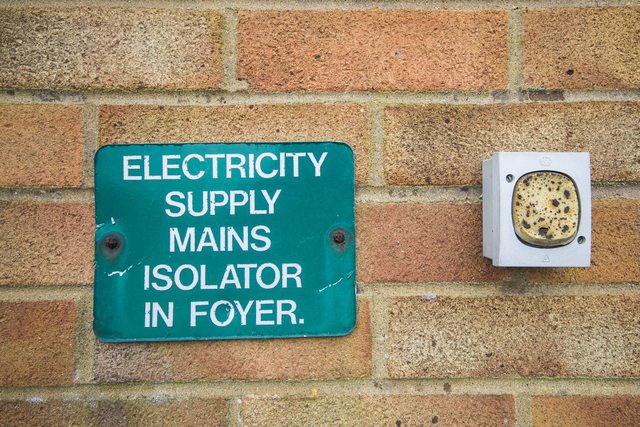
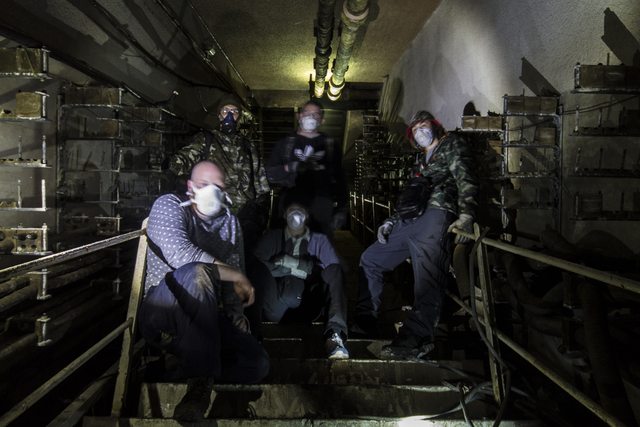
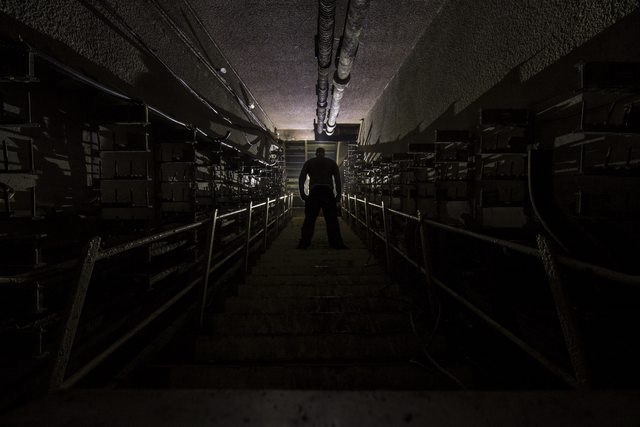
WWII
On 24th September 1937 RAF Bawdsey became the first fully operational Radar station in the world.* This was only just over eighteen months after the first experiment, conducted by Robert Watson Watt and Arnold Wilkins, established that by using transmitted radio waves it was possible to detect an approaching aircraft.* Bawdsey continued in the development of Radar until the outbreak of the Second World War, on 3rd September 1939, when the scientific team was moved from this vulnerable east coast site to Dundee.* RAF Bawdsey remained an important Radar station and later a Bloodhound Surface to Air Missile (SAM) site until 31st March 1991, when it was officially closed.
Following the First World War, protecting the UK from attack was discussed at great length. But it was not until 1934, when an air-defence exercise to test defence was carried out that things really started to get going. Although the targets and routes of the exercise were known, more than half the bombers managed to get through to their targets. This led to the Air Ministry looking at the idea of radio “death rays” which would eliminate or disable pilots and their aircraft. The Scots physicist Robert Watson-Watt, supervisor of a national radio research laboratory and descendant of James Watt, inventor of the first practical steam engine, was contacted and asked for his views. Watson-Watt dismissed the idea of death rays but said that radio beams could be bounced off enemy aircraft to detect them. He asked his assistant, Arnold “Skip” Wilkins, to undertake some calculations He then drew up a memo and covering letter outlining his ideas and although it was met with enthusiasm, proof that the system could work was demanded.
On 26 February 1935, Watson-Watt and Arnold Wilkins successfully demonstrated their system using a BBC transmitter which managed to pick up a bomber being used as a test target. In May 1935 Watson-Watt, Wilkins and a small team of scientists moved to Orfordness to conduct a series of historic experiments over the sea that would lead to the world’s first working ‘RADAR’ system. It soon became apparent that Orfordness was inadequate for further research and Bawdsey Manor Estate was purchased for £24,000. In February 1936 the research scientists occupied Bawdsey Manor House and the stables and outbuildings were converted into workshops. 240ft wooden receiver towers and 360ft steel transmitter towers were built and Bawdsey became the first Chain Home Radar Station. By the outbreak of World War 2 a chain of radar stations was in place around the coast of Britain. These radar stations were to prove invaluable during the Second World War and particularly during the Battle of Britain. With 2,600 Luftwaffe planes to the RAF’s 640, it was the use of radar that saved the day.
As a high-priority target for the Luftwaffe, Bawdsey didn’t get off lightly and was bombed on at least 12 occasions. However, huge earth revetments supported by reinforced concrete walls and a roof specially designed to dissipate the force of an overhead blast prevented the destruction of the station. During WW2, RAF Bawdsey was identified as a potential target and in September 1939 was protected by three 40mm Bofors guns and two .303 Lewis anti-aircraft guns. With an increased fear of a German invasion, these defences were supplement in 1940 by slit trenches, sandbag gun emplacements, a concrete gun post and at least ten type 24 pillboxes; nine of these still survive. There were several attacks on the station during 1940 which did little damage with no casualties and on 18th October 1940 anti-aircraft gunners shot down a German bomber. Sporadic attacks continued over the following three years with some loss of life; the last bombing raid near Bawdsey was on 30th June 1944. A V1 rocket crashed on the beach on 21st September 1944 and a V2 detonated over the sea on 9th October.
ROTOR
ROTOR was a huge and elaborate air defence radar system built by the British Government in the early 1950s to counter possible attack by Soviet bombers. The system was built up primarily of war-era radar systems, and was used only briefly before being replaced by the more modern Linesman/Mediator system. A similar expedient system in the United States was the Lashup Radar Network.UK radar operations were wound down late in the war, and by the time the war ended were already largely unused. It was assumed that another war was at least ten years away, and the need for any improvements in the cobbled-together system seemed remote.
Thinking changed dramatically in 1949 with the Soviet test of their first atom bomb. It was known that the Soviets had made exact copies of the B-29 Superfortress as the Tu-4 Bull, and these aircraft had the performance needed to reach the UK with a nuclear payload. Studying the problem, the 1949 Cherry Report suggested that the 170 existing Royal Air Force radar stations be reduced to 66 sites and the electronics extensively upgraded. Most of the new network would be made up of 28 re-built Chain Home systems, while the rest were taken from the existing selection of Chain Home Low, Chain Home Extra Low and the various Ground-controlled interception (GCI) radars that had formerly served special purposes. This was, in part, a stop-gap measure anticipating the availability of the dramatically improved Type 80 Green Garlic radar which would replace the various early warning radars with a single system of much greater performance. Interception guidance would still be handled by existing systems in either case. All of the radars were to be improved in terms of siting with the addition of hardened control bunkers to protect the operators from a conventional attack. On the east coast, the coast toward which a Soviet attack would be most likely, the bunkers were underground in the 'R' series (R1, R2, R3 and R4 etc.), while those on the western side of the UK were generally semi-sunken hardened structures ('R6') or above ground 'Secco' type huts (Hartland Point etc.). The R-series bunkers themselves were otherwise similar, featuring 10-foot-thick (3.0*m) concrete walls with all equipment, operations generators and air conditioning located inside.
Additionally, ROTOR re-arranged the existing RAF Fighter Command structure into six "Sector Operational Commands" (SOC) with their own command bunkers (three level 'R4' protected accommodation). Only four of these were built. Additional "Anti-Aircraft Operations Rooms" were built to coordinate the British Army's AA defences in the same overall system. The entire network of bunkers, radars, fighter control and command centres used up 350,000 tons of concrete, 20,000 tons of steel and thousands of miles of telephone and telex connections. The work was mainly carried out by the Marconi Wireless and Telegraph Company in several phases, called ROTOR 1, ROTOR 2 and ROTOR 3. As the anticipated Type 80 "Green Garlic" radar started testing shortly after ROTOR came online, it became clear that it could fill both early warning and interception guidance from a single site. This dramatically decreased the complexity of the ROTOR system, which otherwise required sightings from the early warning radars to be telephoned to the fighter control GCI stations for local plotting. By concentrating all of this complexity at a single site the total number of operators was greatly reduced.
As a result of the introduction of the Type 80 (Green Garlic), many of the existing ROTOR sites were rationalized into Master Radar Stations (MRS), while the rest were made redundant, some only two years after opening, and all of the AAOR sites were closed. A few of these were re-used for government department ('RSG's) and local authority wartime headquarters. In the mid-1960s the MRSs themselves were replaced with a new system called Linesman/Mediator.
Until the end of the Cold War many of the sites were retained by the government but now have been sold off to private buyers or converted into and some transferred to the National Air Traffic Control Centre.
EXPLORE
This is a site we dubbed ‘The Spider Bunker’ long ago after reading various reports on here and through other forums however until this visit, none of us has seen it for ourselves. We found the site fairly easily and took full advantage of the ample parking, making our way through the perimeter fence and into the bungalow we had all seen in so many previous reports and which we knew was actually a disguised entrance to find……..nothing but a chuffing great slab of concrete (and a pretty cool looking turnstyle) and a sudden realisation that I didn’t have the connection plate for my tripod with me (Fffffffffffuuuuuuu!!). Worried that the ‘totally sealed up’ rumours were true, we carried on looking, BigDirk reminding us that “She was here 3 weeks ago and said in her report it was the same usual entrance”. We split up to check the various buildings with me and Pringle going one way and Piffblazer, BigDirk and another non-member went the other and before we knew it, Pringle had found the access point. After a squeeze and a shuffle we found ourselves at the top of a gloriously gloomy staircase.
I had looked forward to this explore for so long with slight trepidation (prangin’?) after googling red backed spiders a few too many times however this was all forgotten once we descended into the darkness and had a look around; what a place! The bunker is in pretty good nick with very little flooding apparent. Graffiti was minimal to non-existent and there was a wealth of artefacts left over from its days of active service. I couldn’t believe just how vast it was, with some rooms boasting double height ceilings that must have risen 25ft above us. An awesome place steeped in history and a real privilege to visit, one I’ll definitely be returning to with all the right gear. As for the spiders…..I didn’t see one.
The main things to watch out for are the holes and the smell, a good mask and torch are essential down there!
On with the pictures! Sorry if the perspective on some is a little….strange. I ended up using anything I could find as a tripod which mainly involved me lugging around an old shelving unit.




























